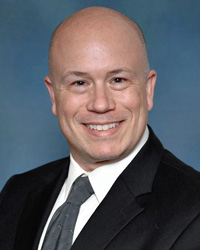Teaching ALR using VARK modalities
This article is from the spring 2022 issue of Hearsay, the semi-annual newsletter of the Wheat Law Library.
Article
 This spring celebrates the second anniversary of our last normal week. Two years ago, I was teaching Advanced Legal Research (ALR). Two years ago, I scrambled to put into place an effective learning path using nothing but online resources. And it worked. I even saw some improvements in certain areas with the new model of learning. Not one to squander an opportunity to improve, I decided to reevaluate how I teach ALR.
This spring celebrates the second anniversary of our last normal week. Two years ago, I was teaching Advanced Legal Research (ALR). Two years ago, I scrambled to put into place an effective learning path using nothing but online resources. And it worked. I even saw some improvements in certain areas with the new model of learning. Not one to squander an opportunity to improve, I decided to reevaluate how I teach ALR.
The first issue was delivery of content. Of course, the class would be in person. But I would also stream each class via Zoom, allowing remote students to join and participate in class in real-time.
Next, I looked at the best methodology for delivering the course material to the students. For this, I decided to incorporate Fleming and Mills VARK Modalities (Neil D. Flemming & Colleen Mills, Not Another Inventory, Rather a Catalyst for Reflection, 11 TO IMPROVE THE ACADEMY 137 (1992)). The acronym VARK stands for Visual, Auditory (or Aural), Read/Write and Kinesthetic.
Visual
Visual learners are better able to retain information when it’s presented to them in a graphic depiction, such as arrows, charts, diagrams, symbols and more. Visual learners thrive with clear pictures of information hierarchy. Legal research lends itself to diagrams, and it’s easy enough to create and embed them into PowerPoint presentations.
Auditory
Also known as “aural,” auditory learners thrive on information that is delivered to them vocally. Group settings where vocal collaboration is present, such as classroom lectures, would be a good example. To cover auditory learners, we, of course, have the lecture. I also make sure to include collaboration in class.
I use group assignments, quizzes and even games to engage aural students. For those who have tuned in via Zoom, I will create a breakout room where they can work together. My ALR students are required to give presentations on their chosen topics at the end of the semester. The opportunity to have students openly discuss their research not only gets them comfortable with public speaking but also gives auditory learners a chance to shine.
Reading & Writing
Focusing on the written word, reading and writing learners succeed with written information on worksheets, presentations and other text-heavy resources. These learners are note-takers and perform strongly when they can reference written text.
How I incorporate readers and writers into my lectures is by using PowerPoint and later uploading my slides. I also require a written pathfinder on a subject of their choice at the end of the semester. This is the same topic as their presentation.
Kinesthetic
Taking a physically active role, kinesthetic learners are hands-on and thrive when engaging all their senses during course work. These learners tend to work well with simulated experiences and tend to thrive when they can relate their task to something personal or of great interest. The more hands-on tasks you can provide students, the better off they will be. I accomplish this by providing graded research assignments throughout the semester. On top of that, the final paper is a pathfinder, focusing on a topic of the student’s choosing.
Summary
Advanced Legal Research’s move back to a regular classroom this semester opened some interesting opportunities for me to use the technology and methodology I learned while teaching remotely. Zoom lets me easily record lectures, allowing for visual and auditory learners to have an easily accessible means for reviewing material, where in the past all they would get would be class notes and a copy of my PowerPoint presentations. My past usage of in-class collaborative assignments can even continue for those who must be remote through the use of Zoom’s breakout rooms. And continuing the use of presentations and final papers brings in every modality to cover each student’s natural learning preference.
Blake Wilson
Assistant Director for Instructional and Faculty Services
Contact the Library
Circulation Desk
785-864-3026
Reference Questions
lawref@ku.edu
785-864-3025